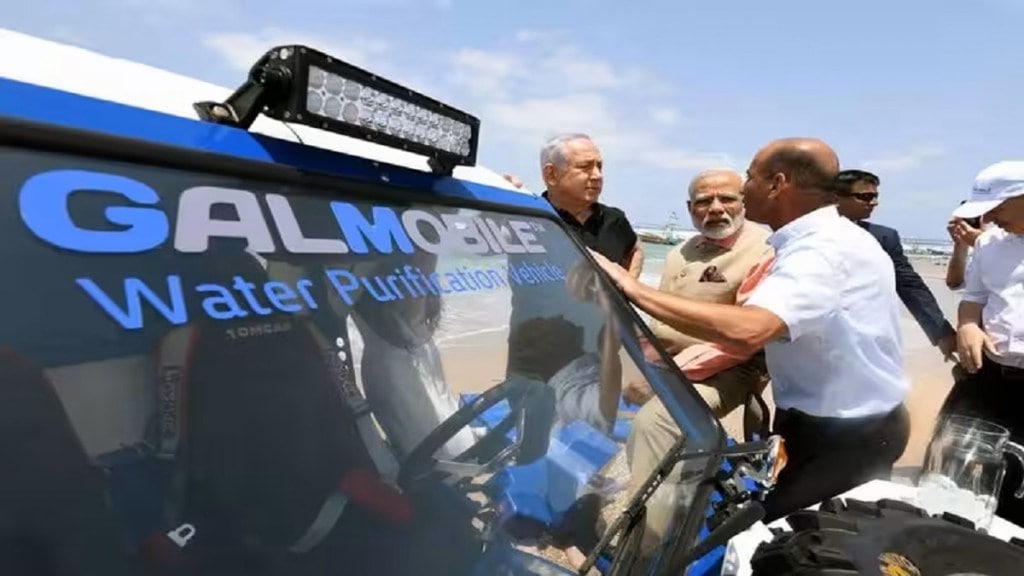By Dr Ram Karan Singh
Desalination is the process of removing salt and other impurities from seawater to make it suitable for human consumption, agriculture, and industrial use. In a country like India, where water scarcity is a pressing issue in several regions, desalination technology holds great promise.
The availability of seawater on the earth is abundant. The oceans contain nearly 98% of the earth’s water. The remaining close to 2% is in ice caps and glaciers. The sea water is considered to be highly saline with permanent salt in the dissolved form. Removal of such salts is possible only with the advanced water treatment technologies. The other challenge post-treatment is the desalinised water becomes mineral free so it is to be re-mineralised to make it potable this enhances the further cost of treatment. The seawater has close to 3.5% salinity, it also provides ecosystem support to marine life and global biodiversity, and the ocean plays a major role in regulating the climate of the earth. The ocean also plays the role of carbon sink absorbing and storing a large amount of carbon dioxide gas from the atmosphere that mitigate the impact of climate change.
In recent times due to the impact of climate change, no uniform distribution of water resources in different sectoral uses, population growth and the change in lifestyle the per capita water availability is reducing in India as well as globally.
The desalination of seawater with advanced water treatment technologies may be the solution to this problem, especially in coastal areas. The agricultural is the largest consumer of fresh water in India the desalinisation may be a possible solution for the same. The industries such as power plants and refineries, require large amounts of freshwater. The desalinised water can meet their demand it will reduce the burden on fresh water sources. The desalinated water can be used to provide safe drinking water as well in the water-scarred areas.
The coastal areas with desalinisation plants can support economic development and tourism by ensuring a sustainable clean water supply. In recent times due to climate change’s impact the erratic rainfall, drought and flood situations may be mitigated with this technology and a resilient source of fresh water supply can be brought in. Though numerous benefits are there certain challenges which will come on the way is related to the requirement of energy, environmental impact, the cost of desalinisation technologies, and finally the policy and the regulatory framework.
The opportunity for desalination in India is expected to grow because the technology has become more efficient and cost-effective. The water shortage is a continuous and pressing issue. India is bordered by the Indian Ocean to the south, the Arabian Sea to the west, and the Bay of Bengal to the east. These vast bodies of seawater are critical resources for the country. The marine ecosystem, mineral resources, renewable energy sources, weather and climate, security and defence, marine pollution conservation and the cultural and spiritual importance.
India’s seawater resources are vital for its economic growth, food security, and cultural identity. Sustainable management and conservation efforts are essential to protect these resources for future generations while addressing challenges such as overfishing and pollution.
The advanced seawater treatment technologies referred to as Desalination is the primary technology used to treat seawater. The Reverse Osmosis (RO) is the most common desalination method employed due to its energy efficiency and effectiveness. Reverse Osmosis (RO): RO is the most common desalination technology used worldwide. It involves forcing seawater through a membrane to remove salt and impurities. It’s energy-efficient and widely used for both small and large-scale desalination plants.
One of the largest reverse-osmosis facility in the world at Israel is a good example. In Israel, a few years ago, due to the worst drought in at least 900 years, it became a critical issue. However, the technology radically changed the scenario. This was achieved by setting up the advanced desalination plants and the reuse of scarce water resources.
In the Multi-Effect Distillation (MED) method seawater is heated and evaporated in multiple stages, with the vapour condensing into freshwater. It’s an energy-intensive process but can be effective in specific contexts. In the Multi-Stage Flash (MSF) method the flashing of seawater at different pressure levels to produce freshwater. It’s also energy-intensive but is still used in some large desalination plants. In Electro electro-dialysis (ED) method, the ED uses an electric field to drive ions through selective ion-exchange membranes, separating freshwater from seawater. It’s less common than RO but has its applications.
The greater challenge in advanced seawater treatment i.e., the desalination process is related to sustainability. This includes the incorporation of green energy sources such as solar energy, the use of the most energy-efficient desalination process and quality environmental monitoring. Public awareness campaigns are important to educate them about related water conservation needs and use desalinated water more wisely.
The research challenges are related to improving the desalination technologies, reducing the cost of treatment per unit of water and addressing the adverse impact on the environment, brine discharge, and high energy consumption. These research challenges may be addressed through advancements in technologies and better environmental management practices.
The oceans are a credible source of scientific knowledge. Climate science, marine ecosystems and oceanography are the established scientific areas of study. Renewable energy sources such as tidal and wave energy. Sustainable environmental practices and conservation technologies are essential for preserving the Earth’s oceans and its resources.
The author is a Sr. Professor and the Vice Chancellor at ICFAI University Dehradun. A globally acclaimed academician, his area of research lies in the field of environmental engineering, green energy technologies, climate change adaptation and mitigation.
Disclaimer: Views expressed are personal and do not reflect the official position or policy of Financial Express Online. Reproducing this content without permission is prohibited.

